Yohann Koshy in The Baffler:
 TWO YEARS AGO, at a panel discussion held in a crowded theater in Brighton, England, on the fringe of the Labour Party’s annual conference, two thinkers were debating the way out of capitalism. Paul Mason, the journalist and author of Postcapitalism, relayed his book’s thesis: information technology, as seen in digital files that cost nothing to reproduce, “cheapens real things so rapidly that it disrupts capitalism’s normal mechanisms of adaptation and survival,” thus undermining the system from within. David Harvey, the scholar of Marx’s Capital, disagreed:
TWO YEARS AGO, at a panel discussion held in a crowded theater in Brighton, England, on the fringe of the Labour Party’s annual conference, two thinkers were debating the way out of capitalism. Paul Mason, the journalist and author of Postcapitalism, relayed his book’s thesis: information technology, as seen in digital files that cost nothing to reproduce, “cheapens real things so rapidly that it disrupts capitalism’s normal mechanisms of adaptation and survival,” thus undermining the system from within. David Harvey, the scholar of Marx’s Capital, disagreed:
Every time a new wave of technology comes along, it does indeed seem to suggest some beautiful new future that can be constructed out of it. . . . the answer is, “well, it could be,” but it’s not going to be because the capitalist social relations are dominant . . . they are going to make sure that these new technologies get used to squeeze value out of labor.
It wasn’t exactly the Rumble in the Jungle, but the exchange illustrated two deeply different approaches to post-capitalist strategy: one places its emphasis on technology to light the way, the other on the dynamics of class struggle. Moderating the discussion was Aaron Bastani, co-founder of Novara Media, an outfit that emerged out of the 2010-2011 UK student movement and which has been plugging the gap in Britain’s discursive ecosystem for complex and accessible thinking from the left. Bastani’s first book, Fully Automated Luxury Communism, is something of a bridge between Mason and Harvey, fusing a futurological account of the emancipatory potential of digital technology with a “political project of collective solidarity and individual happiness.” If successful, Bastani argues, the endpoint will be a society “as distinct from our own as that of the twentieth century to feudalism.”
Fully. Automated. Luxury. Communism. It sounds like the future. Or, rather, how the future used to sound, when children read magazines about holidays on the moon. Popularized by Bastani in a 2014 video, the pitch is simple: post-2008 capitalism is in a secular crisis, sustained by an unprecedented amount of cheap money from central banks; automation, now paired with the cognitive capacities of artificial intelligence, is eating away at working and middle-class jobs; this renders a new account of a post-capitalist and post-work society necessary.
More here.
 The physicist Werner Heisenberg (1901–1976) won himself a lasting name with a world-altering discovery so startling and influential that it has leaked into popular culture — albeit in a misconceived, bastardized form. Heisenberg’s uncertainty principle is a pillar of quantum physics, and represents the titanic straining of human intelligence to explain phenomena that we really don’t have words to describe. Heisenberg’s achievement rivals Einstein’s — although Einstein found the uncertainty principle to be worse than dubious, a gross violation of the cardinal rules governing scientific truth and an offense against God Himself. Yet for Heisenberg, as he said in Physics and Philosophy (1958), quantum theory — along with Newtonian mechanics, thermodynamics, and electrodynamics and special relativity — is one of the four conceptual systems of physics “that have already attained their final form.”
The physicist Werner Heisenberg (1901–1976) won himself a lasting name with a world-altering discovery so startling and influential that it has leaked into popular culture — albeit in a misconceived, bastardized form. Heisenberg’s uncertainty principle is a pillar of quantum physics, and represents the titanic straining of human intelligence to explain phenomena that we really don’t have words to describe. Heisenberg’s achievement rivals Einstein’s — although Einstein found the uncertainty principle to be worse than dubious, a gross violation of the cardinal rules governing scientific truth and an offense against God Himself. Yet for Heisenberg, as he said in Physics and Philosophy (1958), quantum theory — along with Newtonian mechanics, thermodynamics, and electrodynamics and special relativity — is one of the four conceptual systems of physics “that have already attained their final form.”
 “NO NEWS IS GOOD NEWS,”
“NO NEWS IS GOOD NEWS,” There is a belief, particularly prevalent among scientists, that science writing is more or less glorified PR – scientists do the intellectual work of discovery and writers port their findings from lab to public – but Silent Spring is a powerful reminder that great science writing can expand our scientific and cultural imaginations. Rarely has the work of a single author – or, indeed, a single book – had such an immediate and profound impact on society. Silent Spring was the first book to persuade a wide audience of the interconnectedness of all life, ushering in the idea that ‘nature’ refers to ecosystems that include humans. It spurred the passage in the United States of the Clean Air Act (1963), the Wilderness Act (1964), the National Environmental Policy Act (1970), the Clean Water Act (1972) and the Endangered Species Act (1973). Perhaps most significant, it showed how human health and well-being ties in with the health of our environment, leading to the establishment of the Environmental Protection Agency in 1970. No wonder, then, that writers, activists and scientists concerned about the ongoing destruction of biodiversity and the catastrophic effects of climate change look to Carson with urgent nostalgia.
There is a belief, particularly prevalent among scientists, that science writing is more or less glorified PR – scientists do the intellectual work of discovery and writers port their findings from lab to public – but Silent Spring is a powerful reminder that great science writing can expand our scientific and cultural imaginations. Rarely has the work of a single author – or, indeed, a single book – had such an immediate and profound impact on society. Silent Spring was the first book to persuade a wide audience of the interconnectedness of all life, ushering in the idea that ‘nature’ refers to ecosystems that include humans. It spurred the passage in the United States of the Clean Air Act (1963), the Wilderness Act (1964), the National Environmental Policy Act (1970), the Clean Water Act (1972) and the Endangered Species Act (1973). Perhaps most significant, it showed how human health and well-being ties in with the health of our environment, leading to the establishment of the Environmental Protection Agency in 1970. No wonder, then, that writers, activists and scientists concerned about the ongoing destruction of biodiversity and the catastrophic effects of climate change look to Carson with urgent nostalgia. Truly, the older I get, the older are the books I want to read, and the fewer. I creep further and further back into history. I hide in the murk of lost time.
Truly, the older I get, the older are the books I want to read, and the fewer. I creep further and further back into history. I hide in the murk of lost time. TWO YEARS AGO
TWO YEARS AGO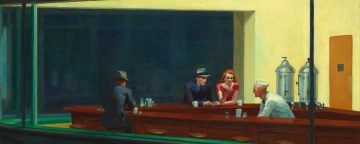 Instagram launched in 2010, some hundred and twenty years after Oscar Wilde’s The Picture of Dorian Gray. The slender novel is a fable of a new Narcissus, of a beautiful young man whose portrait ages and conforms to the life he has lived while his body does not. Dorian Gray, awakened to the magnificence and fleetingness of his own youth by an aesthete’s words and the glory of his picture, breathes a murmured prayer that his soul might be exchanged for a visage and body never older than that singular summer day they were portrayed. By an unknown magic his prayer is answered, and the accidents of his flesh are somehow severed from his essence so that he may live as he likes, physically untouched and unchanged. But this division of body and soul leads Dorian to ethical dissolution. For by the fixed innocence of his appearance, the link between action and consequence is severed.
Instagram launched in 2010, some hundred and twenty years after Oscar Wilde’s The Picture of Dorian Gray. The slender novel is a fable of a new Narcissus, of a beautiful young man whose portrait ages and conforms to the life he has lived while his body does not. Dorian Gray, awakened to the magnificence and fleetingness of his own youth by an aesthete’s words and the glory of his picture, breathes a murmured prayer that his soul might be exchanged for a visage and body never older than that singular summer day they were portrayed. By an unknown magic his prayer is answered, and the accidents of his flesh are somehow severed from his essence so that he may live as he likes, physically untouched and unchanged. But this division of body and soul leads Dorian to ethical dissolution. For by the fixed innocence of his appearance, the link between action and consequence is severed.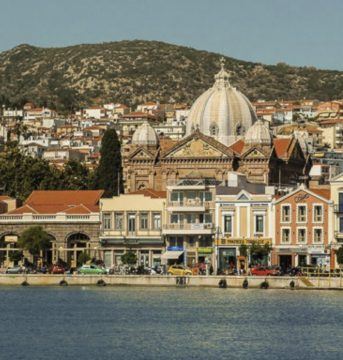 The Spercheios river—which, legend tells us, was dear to the warrior Achilles—marks the southern boundary of the great Thessalian plain in central Greece. I arrived there in late October, but it still felt like summer, and few people were around. Away on the left, the foothills of Mount Oiti were hazed with heat. On my right, at some distance from the road, screened by cotton fields and intermittent olive groves, flowed the Spercheios. At the village of Paliourio, road and river converged, and leaving my car, I wandered down a track that led to a shattered bridge shored with makeshift planking. The river itself was sparkling, picturesquely overhung with oak and wild olive, but on closer inspection I saw machinery and discarded appliances rusting in its shallows.
The Spercheios river—which, legend tells us, was dear to the warrior Achilles—marks the southern boundary of the great Thessalian plain in central Greece. I arrived there in late October, but it still felt like summer, and few people were around. Away on the left, the foothills of Mount Oiti were hazed with heat. On my right, at some distance from the road, screened by cotton fields and intermittent olive groves, flowed the Spercheios. At the village of Paliourio, road and river converged, and leaving my car, I wandered down a track that led to a shattered bridge shored with makeshift planking. The river itself was sparkling, picturesquely overhung with oak and wild olive, but on closer inspection I saw machinery and discarded appliances rusting in its shallows. In 1996,
In 1996,  The
The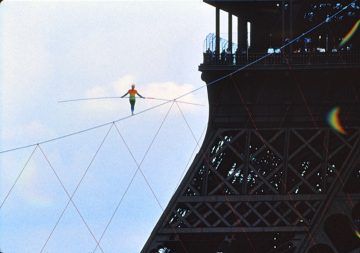 Why did he do it, then? For no other reason, I believe, than to dazzle the world with what he could do. Having seen his stark and haunting juggling performance on the street, I sensed intuitively that his motives were not those of other men—not even those of other artists. With an ambition and an arrogance fit to the measure of the sky, and placing on himself the most stringent internal demands, he wanted, simply, to do what he was capable of doing.
Why did he do it, then? For no other reason, I believe, than to dazzle the world with what he could do. Having seen his stark and haunting juggling performance on the street, I sensed intuitively that his motives were not those of other men—not even those of other artists. With an ambition and an arrogance fit to the measure of the sky, and placing on himself the most stringent internal demands, he wanted, simply, to do what he was capable of doing.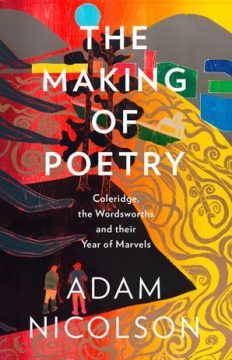 Like most of their generation, Coleridge and Wordsworth had embraced the French Revolution and its ideals of liberty and equality, then lived through the shattering reversals of massacre and war that ensued. By the mid-1790s, many of the poets’ acquaintances were racked by mental and emotional stress. Some of them fled the country; others opted for internal exile, hidden, they hoped, from the spies and informers patrolling the cities. Nicolson argues convincingly that the fragmentary, fierce and strange poetry Wordsworth produced before Lyrical Ballads was composed on the cusp of madness. It was only by going to ground in England’s West Country that Wordsworth was able to cope. We get a rare glimpse of him at that time in Dorothy Wordsworth’s remark that her brother is ‘dextrous with a spade’. Like Heaney, Nicolson’s young Romantics are energised by ‘touching territory’ – digging in to renew themselves and their writing. The idea, Nicolson suggests, ‘that the contented life was the earth-connected life, even that goodness was embeddedness … had its roots in the 1790s’. As furze bloomed brightly on Longstone Hill, Coleridge and Wordsworth began to write poems that would challenge ‘pre-established codes’, change how people thought and so remake the world.
Like most of their generation, Coleridge and Wordsworth had embraced the French Revolution and its ideals of liberty and equality, then lived through the shattering reversals of massacre and war that ensued. By the mid-1790s, many of the poets’ acquaintances were racked by mental and emotional stress. Some of them fled the country; others opted for internal exile, hidden, they hoped, from the spies and informers patrolling the cities. Nicolson argues convincingly that the fragmentary, fierce and strange poetry Wordsworth produced before Lyrical Ballads was composed on the cusp of madness. It was only by going to ground in England’s West Country that Wordsworth was able to cope. We get a rare glimpse of him at that time in Dorothy Wordsworth’s remark that her brother is ‘dextrous with a spade’. Like Heaney, Nicolson’s young Romantics are energised by ‘touching territory’ – digging in to renew themselves and their writing. The idea, Nicolson suggests, ‘that the contented life was the earth-connected life, even that goodness was embeddedness … had its roots in the 1790s’. As furze bloomed brightly on Longstone Hill, Coleridge and Wordsworth began to write poems that would challenge ‘pre-established codes’, change how people thought and so remake the world.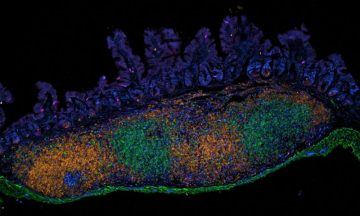 Faecal transplants from young to aged mice can stimulate the gut microbiome and revive the gut immune system, a study by immunologists at the Babraham Institute, Cambridge, has shown. The research is published in the journal Nature Communications today. The gut is one of the organs that is most severely affected by ageing and age-dependent changes to the human
Faecal transplants from young to aged mice can stimulate the gut microbiome and revive the gut immune system, a study by immunologists at the Babraham Institute, Cambridge, has shown. The research is published in the journal Nature Communications today. The gut is one of the organs that is most severely affected by ageing and age-dependent changes to the human 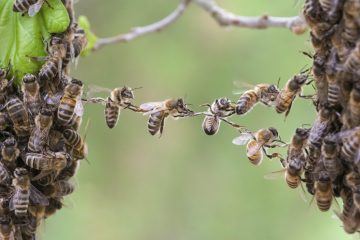 The relation between what is natural and what is morally good is a topic that has concerned philosophers from ancient times to the present. Those who view the part of a human being that belongs to the material world as sordid, unclean, and irrational have understood morality to require the suppression or the taming of nature; the angel in us must control the beast. This outlook is endorsed by Plato and is commonly found in Christian theology. Hobbes’ social contract theory, which presents moral life and political order as the way we escape the miseries of the state of nature, also takes morality and nature to be in certain respects opposed. Many others, though, have looked to nature for some sort of moral guidance. The Stoics viewed the implacable order observed in the heavens as a model for a serene human life. Defenders of rigid social hierarchies pointed to the successful arrangements in a bee hive. Critics of homosexuality argue that it is “unnatural,” while advocates of gay rights deny this. Appeals to what one finds in nature have bolstered social Darwinism, the subordination of women, arguments for and against slavery, egalitarianism, and the idea of universal human rights.
The relation between what is natural and what is morally good is a topic that has concerned philosophers from ancient times to the present. Those who view the part of a human being that belongs to the material world as sordid, unclean, and irrational have understood morality to require the suppression or the taming of nature; the angel in us must control the beast. This outlook is endorsed by Plato and is commonly found in Christian theology. Hobbes’ social contract theory, which presents moral life and political order as the way we escape the miseries of the state of nature, also takes morality and nature to be in certain respects opposed. Many others, though, have looked to nature for some sort of moral guidance. The Stoics viewed the implacable order observed in the heavens as a model for a serene human life. Defenders of rigid social hierarchies pointed to the successful arrangements in a bee hive. Critics of homosexuality argue that it is “unnatural,” while advocates of gay rights deny this. Appeals to what one finds in nature have bolstered social Darwinism, the subordination of women, arguments for and against slavery, egalitarianism, and the idea of universal human rights.
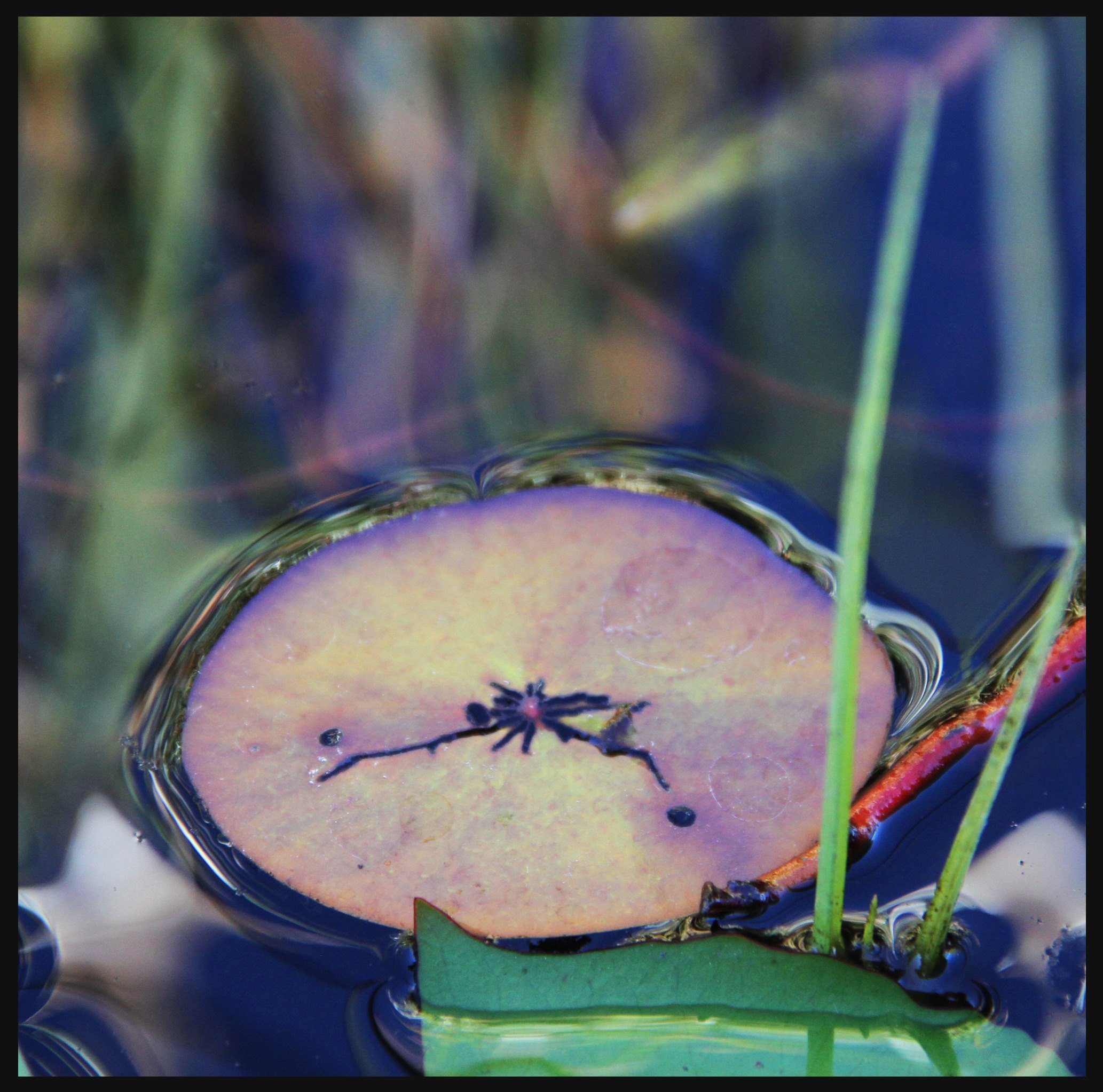
 The authority of scientific experts is in decline. This is unfortunate since experts – by definition – are those with the best understanding of how the world works, what is likely to happen next, and how we can change that for the best. Human civilisation depends upon an intellectual division of labour for our continued prosperity, and also to head off existential problems like epidemics and climate change. The fewer people believe scientists’ pronouncements, the more danger we are all in.
The authority of scientific experts is in decline. This is unfortunate since experts – by definition – are those with the best understanding of how the world works, what is likely to happen next, and how we can change that for the best. Human civilisation depends upon an intellectual division of labour for our continued prosperity, and also to head off existential problems like epidemics and climate change. The fewer people believe scientists’ pronouncements, the more danger we are all in.